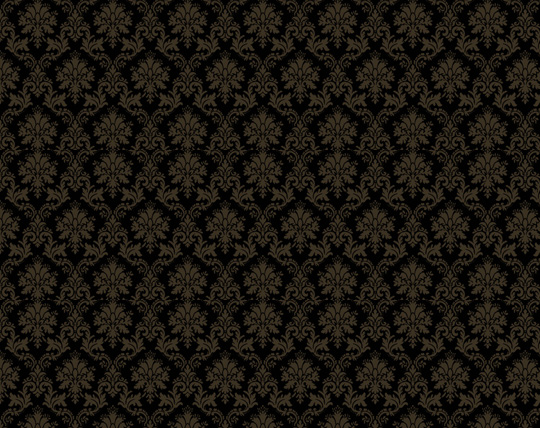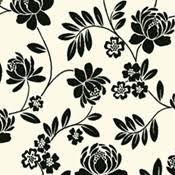Flock Wallpaper Designs History
Flock wallpaper (also known as "flocked wallpaper") has enjoyed increasing popularity with the 21st century, offering a retro look that evokes 1960s aesthetics. While this velvety, textured wall treatment has been around for centuries, its lush and ornate patterns have experienced ups and downs in popularity, with the fashions of interior design regularly oscillating between minimalist and opulent styles. Does this Spark an idea?
Other People Are Reading
Flocked Wallpaper Installation Instructions
At What Height Should I Install a Wallpaper Border?
Print this article
Identification
Flock wallpaper gets its name from the process of "flocking," in which short fibers are applied to an adhesive-coated surface. These fibers can be made of polyester, rayon or nylon. As the fibers are extremely short, typically measuring .01 to .02 inches, the tactile effect resembles that of velvet. Typically, flock wallpaper has ornate decorative patterns evoking the rococo period. Instead of simply marking out patterns with color, flocking is selectively applied to contrast the designs against the unflocked background. A highly-repeated fleur-de-lis would be a typical flock wallpaper design.
History
Based on a technique first used in the early 17th century, flock wallpaper was devised as a means of imitating velvet and textile wall coverings. The first flock wallpapers consisted of a powdery by-product of wool production that was applied to fabric. By the 18th century, patterns for flock wallpapers took inspiration from damask, brocade and cut-velvet curtains and tapestries. By the late 19th century, flock patterns had fallen from vogue, though they would eventually reappear briefly in the late 20th century, and again in the early 2000s.
Sponsored Links
Custom Wallpaper and MORE
Jonathan Adler Wall Decor - Mirrors C.Jere Sculptures, Rex Ray Art ...
JonathanAdler.com
Decorative Considerations
Flock papers were initially used among the aristocracy, as recorded and preserved in such interior design collections as the Victoria and Albert Museum. While flock paper no longer poses a limiting expense, its aesthetic effect still evokes luxury and can be overpowering if not used carefully. Originally, flock wallpapers came in both large and small patterns. The largest patterns would only repeat every 6 or 7 feet, appropriate for the largest and most formal rooms. For smaller, more private rooms, more highly-repeated patterns were designed. Often these were "diaper" patterns, characterized by the repetition of small diamonds. Now flock wallpapers are available in a greater variety of patterns to better suit a room's particular design needs.
Advantages
The long-running success and popularity of flock wallpapers can be attributed, in part, to the practical advantages it has offered over other materials. In the 17th and 18th centuries, flock papers proved to be both extremely durable and, due to the turpentine-based adhesive solution, they repelled moths, a typical problem for other textiles. Contemporary flock wallpaper can be removed easily, often available with convenient vinyl backings. Finally, flock designs provide an economical alternative to textiles with similarly ornate designs.








Flock wallpaper (also known as "flocked wallpaper") has enjoyed increasing popularity with the 21st century, offering a retro look that evokes 1960s aesthetics. While this velvety, textured wall treatment has been around for centuries, its lush and ornate patterns have experienced ups and downs in popularity, with the fashions of interior design regularly oscillating between minimalist and opulent styles. Does this Spark an idea?
Other People Are Reading
Flocked Wallpaper Installation Instructions
At What Height Should I Install a Wallpaper Border?
Print this article
Identification
Flock wallpaper gets its name from the process of "flocking," in which short fibers are applied to an adhesive-coated surface. These fibers can be made of polyester, rayon or nylon. As the fibers are extremely short, typically measuring .01 to .02 inches, the tactile effect resembles that of velvet. Typically, flock wallpaper has ornate decorative patterns evoking the rococo period. Instead of simply marking out patterns with color, flocking is selectively applied to contrast the designs against the unflocked background. A highly-repeated fleur-de-lis would be a typical flock wallpaper design.
History
Based on a technique first used in the early 17th century, flock wallpaper was devised as a means of imitating velvet and textile wall coverings. The first flock wallpapers consisted of a powdery by-product of wool production that was applied to fabric. By the 18th century, patterns for flock wallpapers took inspiration from damask, brocade and cut-velvet curtains and tapestries. By the late 19th century, flock patterns had fallen from vogue, though they would eventually reappear briefly in the late 20th century, and again in the early 2000s.
Sponsored Links
Custom Wallpaper and MORE
Jonathan Adler Wall Decor - Mirrors C.Jere Sculptures, Rex Ray Art ...
JonathanAdler.com
Decorative Considerations
Flock papers were initially used among the aristocracy, as recorded and preserved in such interior design collections as the Victoria and Albert Museum. While flock paper no longer poses a limiting expense, its aesthetic effect still evokes luxury and can be overpowering if not used carefully. Originally, flock wallpapers came in both large and small patterns. The largest patterns would only repeat every 6 or 7 feet, appropriate for the largest and most formal rooms. For smaller, more private rooms, more highly-repeated patterns were designed. Often these were "diaper" patterns, characterized by the repetition of small diamonds. Now flock wallpapers are available in a greater variety of patterns to better suit a room's particular design needs.
Advantages
The long-running success and popularity of flock wallpapers can be attributed, in part, to the practical advantages it has offered over other materials. In the 17th and 18th centuries, flock papers proved to be both extremely durable and, due to the turpentine-based adhesive solution, they repelled moths, a typical problem for other textiles. Contemporary flock wallpaper can be removed easily, often available with convenient vinyl backings. Finally, flock designs provide an economical alternative to textiles with similarly ornate designs.
Flock Wallpaper Designs

Flock Wallpaper Designs

Flock Wallpaper Designs

Flock Wallpaper Designs

Flock Wallpaper Designs
Flock Wallpaper Designs
Flock Wallpaper Designs

Flock Wallpaper Designs
Flock Wallpaper Designs
Flock Wallpaper Feature Wall Example
Wallpapering A Feature Wall..
No comments:
Post a Comment